כללי
תחבורה
אנשים
אירוח
אוכל ושתייה
 What is the local food like in Germany?
What is the local food like in Germany?
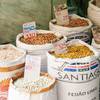 כמה עולה האוכל?
כמה עולה האוכל?
 אילו מקומות יש לאכול?
אילו מקומות יש לאכול?
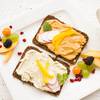 מה ניתן לאכול בגרמניה בתור צמחוני?
מה ניתן לאכול בגרמניה בתור צמחוני?
 אם לכם שאלה כזו אפשר לשתות מים מהצנרת בגרמניה?
אם לכם שאלה כזו אפשר לשתות מים מהצנרת בגרמניה?
 אילו משקאות קרים זמינים?
אילו משקאות קרים זמינים?
 האם יש תרבות קפה ותה בגרמניה?
האם יש תרבות קפה ותה בגרמניה?
 איזה תערובות בירה לנסות בגרמניה?
איזה תערובות בירה לנסות בגרמניה?
 What other alcoholic drinks to try while in Germany?
What other alcoholic drinks to try while in Germany?
 מהם ההגבלות הקיימות לגבי צריבת אלכוהול?
מהם ההגבלות הקיימות לגבי צריבת אלכוהול?
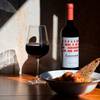 Where to buy alcohol in Germany and how much does it cost?
Where to buy alcohol in Germany and how much does it cost?
ביקור באתרים
משפטי
כסף
בטיחות ובריאות
נסיעות משפחתיות
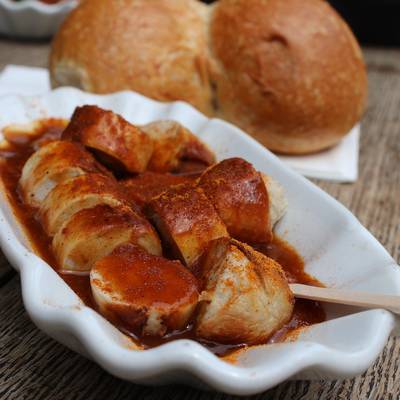
What local dishes to try in Germany?
Some people travel to Germany for the sights and cities, others concentrate on exploring German food. If you are a foodie and about to embark on a culinary journey through Germany, here are some articles that will help you plan your German food travels. From German food markets, and beer gardens, to wine festivals, food museums, and of course, mouthwatering German restaurants, here is the best of Germany’s varied cuisine.
Königsberger Klopse. Named after the former East Prussian capital of Königsberg (now Kaliningrad in Russia), this tasty dish of meatballs in a creamy white sauce with capers is beloved by grandmothers and chefs alike. The meatballs are traditionally made with minced veal, onions, eggs, anchovies, pepper and other spices. The sauce's capers and lemon juice give this filling comfort food a surprisingly elegant finish. Today it's possible to find königsberger Klopse in most German restaurants, but they are especially popular in Berlin and Brandenburg.
Maultaschen. Maultaschen from Swabia are a lot like ravioli but bigger. They are typically palm-sized, square pockets of dough with fillings that run the gamut from savory to sweet and meaty to vegetarian. A traditional combination is minced meat, bread crumbs, onions and spinach – all seasoned with salt, pepper and parsley. They're often simmered and served with broth instead of sauce for a tender, creamier treat, but are sometimes pan-fried and buttered for extra richness. Today you can find Maultaschen all over Germany (even frozen in supermarkets) but they're most common in the south.
Labskaus. Labskaus is not the most visually appealing dish, but a delectable mess that represents the seafaring traditions of northern Germany like no other. In the 18th and 19th centuries, ship provisions were mostly preserved fare, and the pink slop of Labskaus was a delicious way of preparing them. Salted beef, onions, potatoes and pickled beetroot are all mashed up like porridge and served with pickled gherkins and rollmops. It has long been a favorite of Baltic and North Sea sailors. Today the dish is served all over northern Germany, but especially in Bremen, Kiel and Hamburg.
Sausages. There is no Germany without sausages. There are countless cured, smoked and other varieties available across wurst-loving Germany, but the main focus is some of the best German street food: Bratwurst, or fried sausages. There are more than 40 varieties of German Bratwurst. Fried on a barbecue or in the pan, and then served in a white bread roll with mustard on the go, or with potato salad or sauerkraut as the perfect accompaniment for German beer. Some of the most common Bratwurst are Fränkische Bratwurst from Fraconia with marjoram as a characteristic ingredient, Nürnberger Rostbratwurst that is small in size and mostly comes from the grill, and Thüringer Rostbratwurst from Thuringia, which is quite spicy. Thuringia is also the home of the first German bratwurst museum, which opened in 2006.
Currywurst. Practically synonymous with German cuisine since 1945, Currywurst is commonly attributed to Herta Heuwer, a Berlin woman who in 1949 managed to obtain ketchup and curry powder from British soldiers, mixed them up and served the result over grilled sausage, instantly creating a German street food classic. Today boiled and fried sausages are used, and Currywurst remains one of the most popular sausage-based street foods in Germany, especially in Berlin, Cologne and the Rhine-Ruhr, where it's usually served with chips and ketchup or mayonnaise or a bread roll. Not the most sophisticated of dishes, but a filling street snack born out of necessity about which all of Germany is still mad: some 800 million are consumed a year.
Döner kebab. Döner kebab was introduced to Germany by Turkish immigrant workers coming here in the 1960s and '70s. One of the earliest street sellers was Kadir Nurman, who started offering döner kebab sandwiches at West Berlin's Zoo Station in 1972, from the where the dish first took both West and East Berlin by storm and then the rest of Germany. From its humble Berlin beginnings when a döner kebab only contained meat, onions and a bit of salad, it developed into a dish with abundant salad, vegetables (sometimes grilled), and a selection of sauces from which to choose. Veal and chicken spits are widely used as is the ever-popular lamb, while vegetarian and vegan versions are becoming increasingly common.
Schnitzel. Some might argue that schnitzel is Austrian and not German, but its origins are actually Italian. This controversy hasn't stopped the breaded and fried meat cutlets to become popular everywhere in Germany, however. While the Austrian or Vienna schnitzel is by law only made with veal, the German version is made with tenderized pork or turkey and has become a staple of most traditional restaurants. Whereas Vienna schnitzel is served plain, Germans love to ladle a variety of sauces over their schnitzel. Jägerschnitzel comes with mushroom sauce, Zigeunerschnitzel with bell pepper sauce and Rahmschnitzel is served with a creamy sauce. All go well with fried potatoes and cold lager or a Franconian apple wine.
Brezeln (pretzel). Just like the sausages, most regions in Germany have their own way to prepare pretzels. Pretzels can be a side dish, to accompany your bratwurst. Or, they can be sliced open and filled like sandwiches. Best way to eat a pretzel? Fresh and warm out of the oven with loads of butter. These dough delights are delicious in any shape and size (and there are many).
Rouladen. Rouladen is a delicious blend of bacon, onions, mustard and pickles wrapped together in sliced beef or veal. Vegetarian and other meat options are also now widely available but the real deal is Rinderrouladen (beef rouladen), a popular dish in western Germany and the Rhine region. This is a staple of family dinners and special occasions. They are usually served with potato dumplings, mashed potatoes and pickled red cabbage. A red wine gravy is an absolute requirement to round off the dish.
Sauerbraten. Sauerbraten is regarded as one of Germany's national dishes and there are several regional variations in Franconia, Thuringia, Rhineland, Saarland, Silesia and Swabia. This pot roast takes quite a while to prepare, but the results, often served as Sunday family dinner, are truly worth the work. Sauerbraten (literally "sour roast") is traditionally prepared with horse meat, but these days beef and venison are increasingly used. Before cooking, the meat is marinated for several days in a mixture of red wine vinegar, herbs and spices. Drowned in a dark gravy made with beetroot sugar sauce and rye bread to balance the sour taste of the vinegar, Sauerbraten is then traditionally served with red cabbage, potato dumplings or boiled potatoes.
Himmel un Ääd. This is another messy and not necessarily optically appealing dish, but nevertheless definitely worth trying. Himmel und Erde, or Himmel un Ääd in Cologne (both mean "Heaven and Earth") is popular in the Rhineland, Westphalia and Lower Saxony. The dish consists of black pudding, fried onions and mashed potatoes with applesauce. It has been around since the 18th century, and these days is a beloved staple of the many Kölsch breweries and beer halls in Cologne, where it goes perfectly well with a glass or three of the popular beer.
Saumagen. Saumagen was made famous by German Chancellor Helmut Kohl, who (like the dish) hailed from the Palatinate. Kohl loved Saumagen and served it to visiting dignitaries including Margaret Thatcher, Mikhail Gorbachev, Ronald Reagan and Bill Clinton. The literal translation of this dish is "sow's stomach," but Saumagen is a lot less curious than its name implies. Somewhat resembling Scottish haggis, it is prepared by using the stomach of a pig (or an artificial one) as a casing for the stuffing made from pork, potatoes, carrots, onions, marjoram, nutmeg and white pepper. It is then sliced and pan-fried or roasted in the oven, and, as Kohl knew, goes down perfectly well with sauerkraut, mashed potatoes and a dry white wine from the Palatinate.
Spargel. Germans are mad about white asparagus. As soon as harvest time arrives around mid-April, asparagus dishes appear on the menus of restaurants all over Germany, from Flensburg to Munich and Aachen to Frankfurt. There are spargel festivals, a Spargel route in Baden-Württemberg and countless stalls along the roads of Germany selling the "white gold." In restaurants, asparagus is boiled or steamed and served with hollandaise sauce, melted butter or olive oil. It comes wrapped in bacon or heaped upon schnitzel; as asparagus soup, fried asparagus, pancakes with herbs and asparagus, asparagus with scrambled eggs or asparagus with young potatoes. There is an audible sigh all over Germany when Spargelzeit ends on June 24, St. John the Baptist Day.
Reibekuchen. Fried potato pancakes are so popular in Germany that we have more than 40 names for them. They are known as Reibekuchen, Kartoffelpuffer, Reibeplätzchen, Reiberdatschi, Grumbeerpannekuche and so on and so on. Another quintessential German comfort and street food, Reibekuchen are often served with applesauce, on black pumpernickel rye bread or with treacle (a type of syrup). They're popular all year around: in Cologne and the Rhineland they are beloved of revelers during the Karneval festivities in spring, and all German Christmas markets have Reibekuchen vendors where hundreds of litres of potato dough are being processed every day during the holiday season.
Schwarzwälder Kirschtorte. Germany has a vast variety of cakes, but among the most popular is the schwarzwälder Kirschtorte or Black Forest gateau. Allegedly created by Josef Keller in 1915 at Café Agner in Bonn in the Rhineland, it typically consists of several layers of chocolate sponge cake sandwiched with whipped cream and sour cherries, and then drizzled with Kirschwasser. It is decorated with additional whipped cream, maraschino cherries and chocolate shavings. Its popularity in Germany grew quickly and steadily after World War II, and it's during this period that the Kirschtorte starts appearing in other countries too, particularly on the British Isles. Whatever the reason for its success, it is both perfect for Kaffee und Kuchen in a German cafe on a Sunday afternoon as well as dessert.
Käsekuchen. There are rarely any strawberries in German cheesecake (or any other fruits for that matter), and the base is surely not made from crackers but freshly made dough (or even without base, like in the East Prussian version). The filling is made with low-fat quark instead of cream cheese and egg foam is added to give it more fluff, plus lemon and vanilla for some extra freshness. Maybe this purity and the focus on a handful of ingredients is why a version of cheesecake exits in almost every region of Germany: there's Käsekuchen, Quarkkuchen, Matzkuchen and even Topfenkuchen in Austria. Wherever you try it, you can be sure that it is the perfect treat with some added fresh cream and a hot cup of coffee.
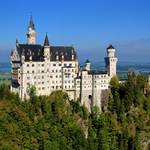
איך אני מגיע לטירת נוישוואנשטיין ממינכן?

איך אני משתמש בכספומטים בגרמניה?

מה ניתן לאכול בגרמניה בתור צמחוני?

אילו משקאות קרים זמינים?

אילו מקומות יש לאכול?
